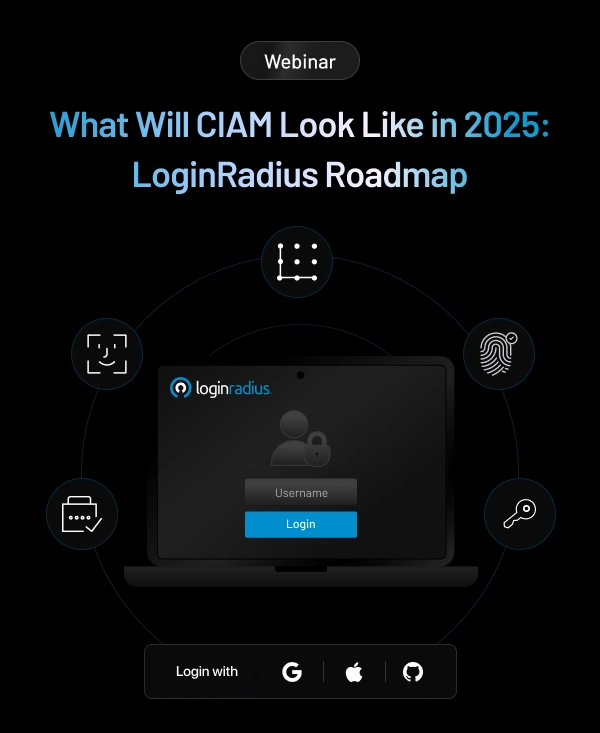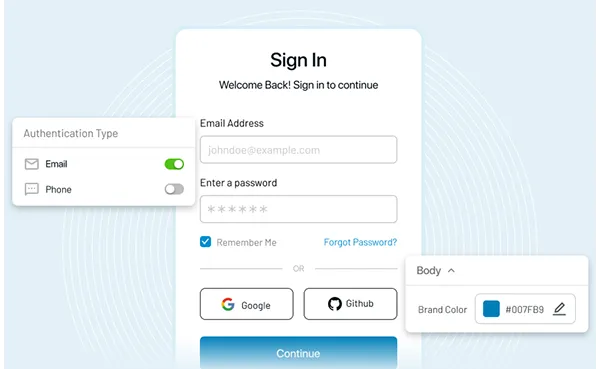Understanding customer behavior in modern identity is not just an advantage but a necessity for businesses to thrive in the digital era. The concept of identity has exceeded its traditional boundaries and has become more multifaceted with how individuals perceive, manage, and interact with their identities in this modern world.
Understanding customers' evolving requirements and implementing new authentication methods can benefit consumers and businesses. Companies can mitigate the risk of identity theft and fraud and assist in enhancing consumer journeys, boosting customer loyalty, and improving conversion rates.
What is Consumer identity?
Consumer identity is the digital reflection of an individual's online existence. it is a collection of characteristics and attributes that uniquely define an individual consumer in the context of their interaction with different products, services, brands, and businesses.
In this digital sphere, understanding and defining consumer identity is crucial for businesses aiming to personalize interactions. Platforms, agencies, and brands own consumer identities.
Consumer behavior in modern identity goes beyond basic demographics, encompassing the way individuals engage with digital platforms, their preferences, and the channels they use. This detailed profile enabled businesses to create personalized experiences, predict customer needs, and tailor products or services accordingly.
Understanding The Needs of Modern Customers
Modern consumers seek seamless and secure experiences and a personalized approach when managing identities. They expect a balance between convenience and security, desiring effortless interaction without compromising protecting their personal information. Also, they focus on transparency and complete control over their identity information.
Understanding the needs of modern consumers involves keeping a close eye on the evolving environment of customer identity. The five trends in consumer identity provide valuable insights into meeting the expectations of today's tech-savvy users.
- Continuous Risk-Based Authentication (RBA)
Organizations are increasingly adopting RBA systems that assess risk signals before granting access. This involves evaluating device posture, network data, and user inputs, enabling fraud detection even before the authenticated session begins.
- Shift to Dynamic Authorization (ABAC)
Many organizations are transitioning from static Role-Based Access Control (RBAC) to dynamic authorization or Attribute-Based Access Control (ABAC). This allows for a centralized approach, evaluating various attributes and data tracking for robust authorization decisions.
- Decentralized identity
The shift towards decentralized identity empowers users to control their information, providing it on a selective basis. This approach enhances security, minimizes data surrender, and allows users to revoke access, fostering a more trustworthy digital interaction.
- Greater Focus on User Experience
With security taking center stage, there's a raised focus on frictionless user experiences. This includes implementing risk-based authentication systems, eliminating passwords, and prioritizing user-centric experiences across the entire customer journey.
- Passwordless Authentication
An emerging trend is the move towards passwordless authentication, offering a seamless and secure login experience. This not only improves user satisfaction but also addresses the high costs associated with password-related incidents and résets.
Reasons Why Businesses Should Switch to Modern CIAM Solutions
For enterрrise, understanding consumer behavior in modern identity is paramount for building lasting relationships. Customer identity and access management (CIAM) solutions can help digital marketing professionals find insights into consumer behavior essential for crafting effective and targeted campaigns.
Besides, as per the Consumer identity Trend Report 2023, providing a rich and seamless authentication experience can drive more conversions.
Let’s understand the reasons why businesses should opt for modern CIAM solutions:
- Personalized Experiences: Tailoring interactions based on individual preferences enhances customer satisfaction and loyalty. A personalized touch fosters a deeper connection between the brand and the customer.
- Targeted Marketing: Crafting campaigns with insights into specific customer segments results in higher conversion rates and return on investment. Precision in marketing efforts ensures resources are effectively utilized.
- Fraud Prevention: Robust consumer behavior in modern identity measures aid in detecting and preventing fraudulent activities, ensuring a secure online environment. Protecting users builds a reputation for reliability and security.
- Product Development: Analyzing consumer data identifies market gaps, leading to the development of products that effectively meet customer demands. Meeting unmet needs contributes to long-term success and customer loyalty.
How Does Robust CIAM Solution Meet The Evolving Consumer Needs?
Central to this transformation is customer identity and access management (CIAM), offering a strategic approach to understanding customers, safeguarding their data, and providing seamless access to services. Here are five ways CIAM serves as a key driver in meeting evolving preferences of customer behavior in modern identity:
- Secure User Data
in an era where security and privacy are paramount, CIAM ensures the protection of customer data from unauthorized access or misuse. A robust CIAM solution becomes a safeguard against potential data breaches, maintaining customer trust and preventing reputational damage.
- Provide Simple and Secure Authentication
CIAM goes beyond traditional username-and-password systems, incorporating adaptive multi-factor authentication (MFA) for enhanced security. By leveraging factors like biometrics and risk scoring, CIAM simplifies the authentication process, addresses user frustrations, and reduces the likelihood of negative experiences that may lead to abandonment.
- Improve User Experience
Recognizing the significance of user experience, CIAM streamlines registration processes, making it more likely for unknown web visitors to convert into customers. By gathering insights into anonymous users' behavior or consumer behavior in modern identity, businesses can personalize experiences, offering relevant content and advertisements based on individual preferences.
- Ease Account Management
Complicated account creation processes, including password resets, often discourage customers. CIAM optimizer registration and login procedures, reducing account abandonment rates. Besides, true passwordless authentication is an emerging trend as it provides an actual passwordless experience to users. As a result, organizations can shift focus from acquisition to retention, benefiting from increased profits associated with higher customer retention rates.
- Gain Customer insights
A powerful CIAM solution acts as a centralized platform for collecting, managing, and analyzing customer data. It enables segmentation based on various criteria, providing businesses with a deep understanding of customer choices and needs. In-depth data analysis and reporting capabilities empower organizations to make informed decisions, identify areas of improvement, and discover new growth opportunities.
CIAM is a valuable tool to meet and understand consumer behavior in modern identity. Moreover, it plays a crucial role in supporting enterprises to establish seamless and personalized interactions, thereby contributing to sustainable business growth.
The Bottom Line
As businesses advance into the digital age, the strategic importance of CIAM becomes increasingly evident in understanding customer behavior in modern identity. CIAM not only safeguards user data and elevates security measures but also provides vital in crafting positive user experiences, streamlining account interactions, and unraveling valuable customer perceptive.

















